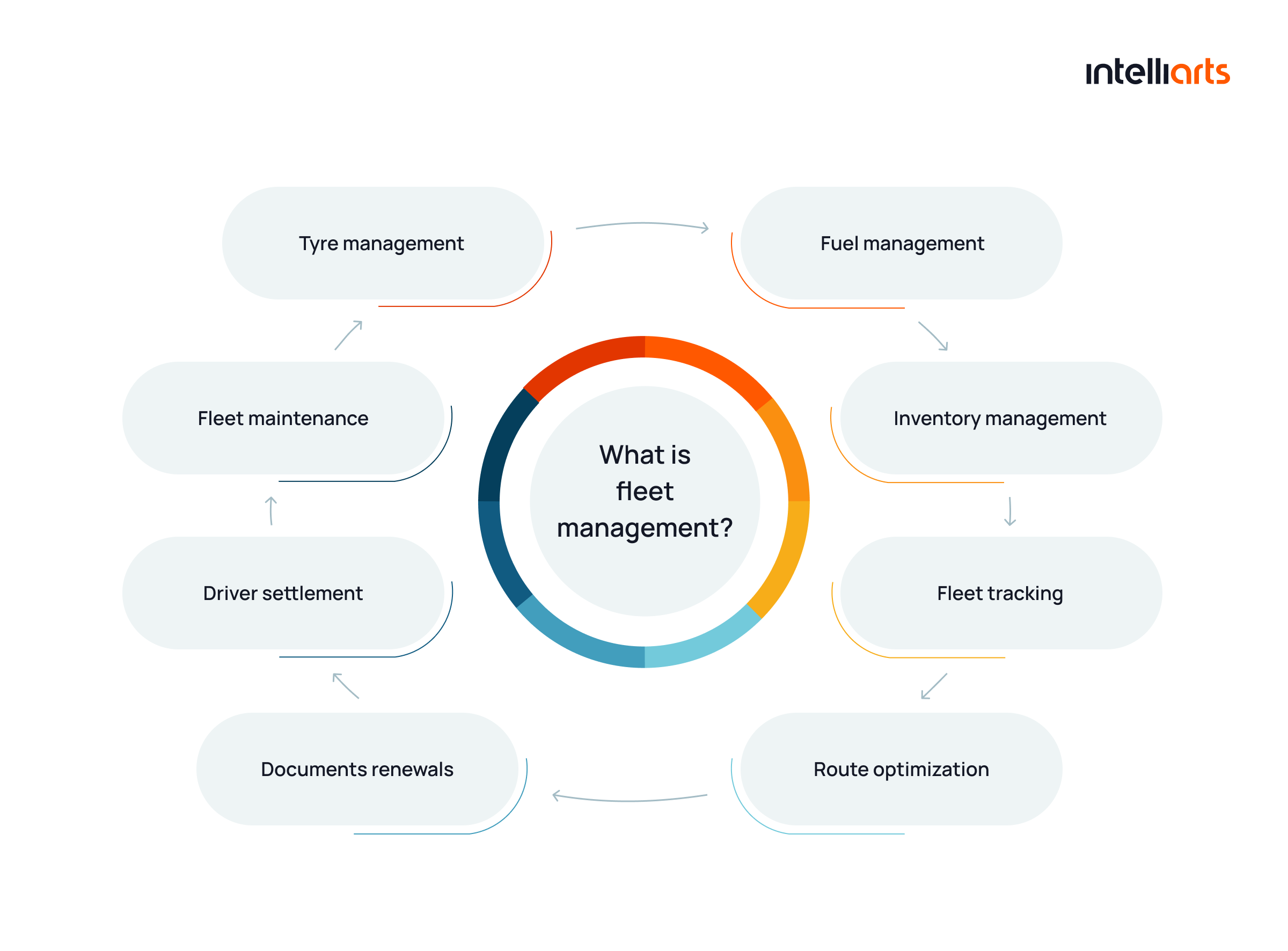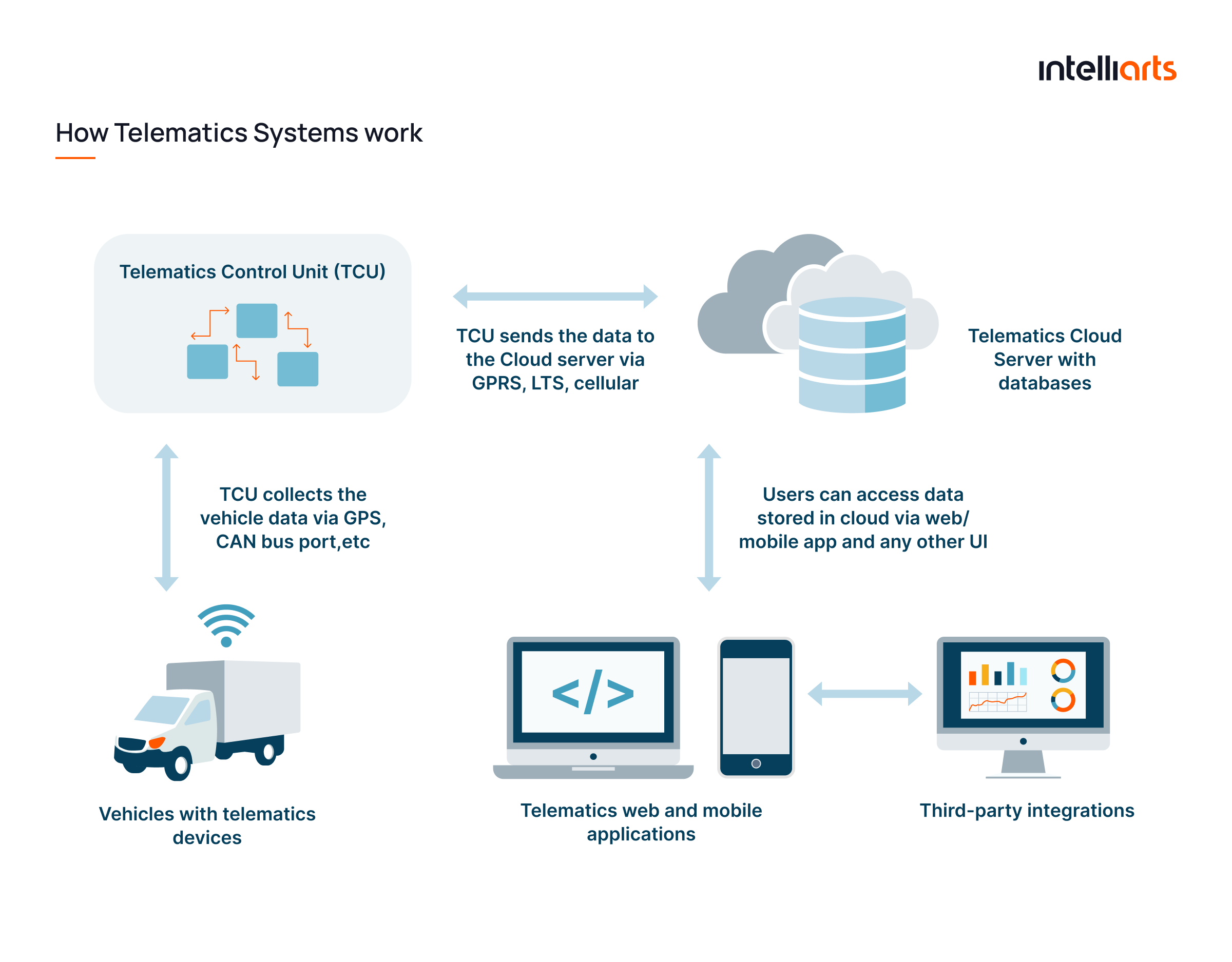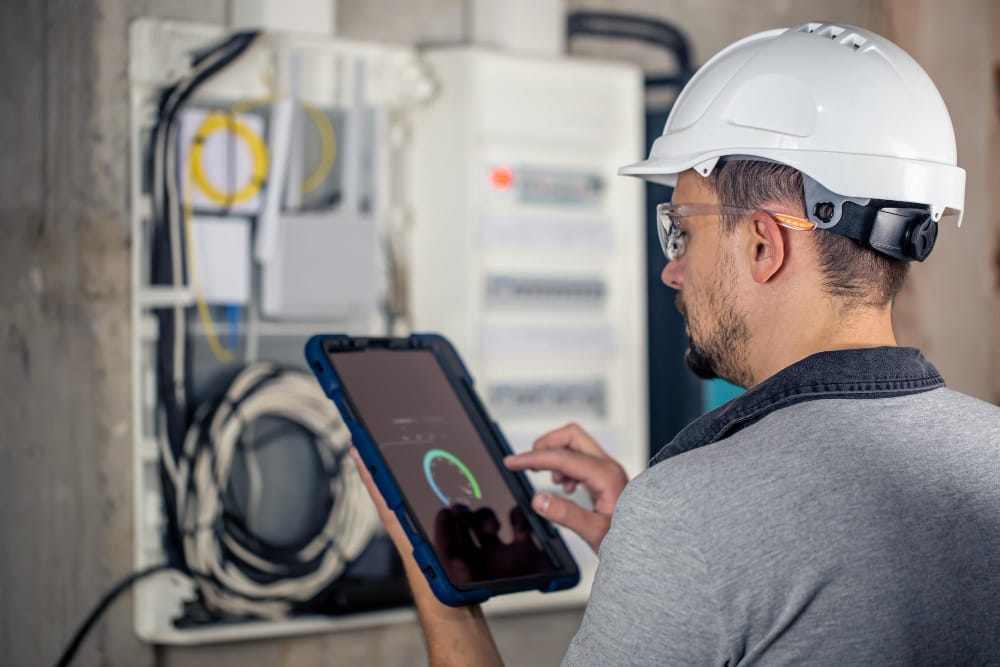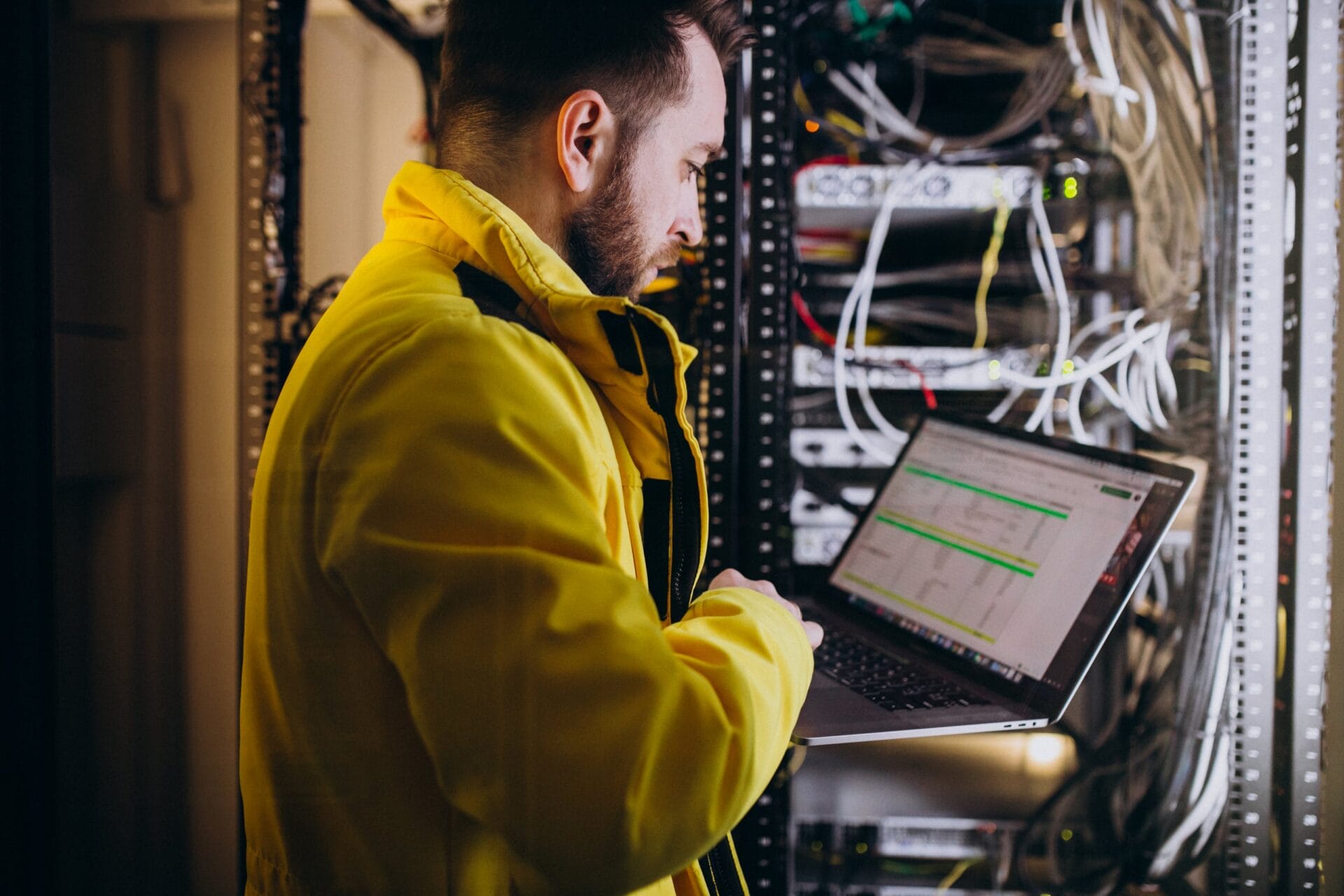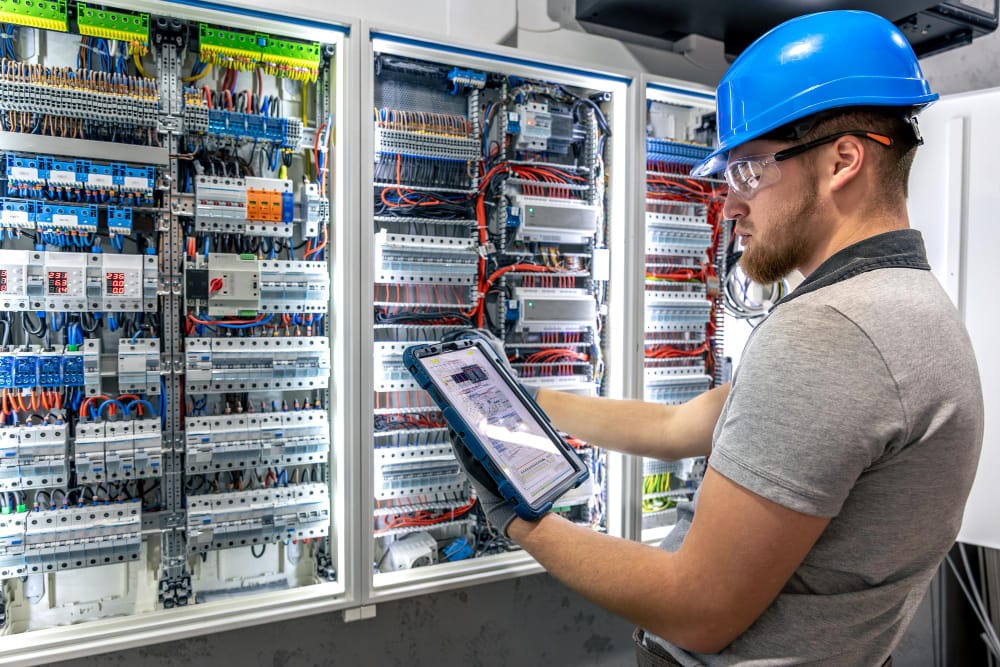Fleet management and telematics systems are becoming a must for public transport operators dealing with rising fuel prices, stricter sustainability rules, and shifting passenger demand. With urban populations growing fast and infrastructure under strain, running reliable and cost-effective services keeps getting harder.
Electrification, autonomous driving, smart infrastructure, and multimodal networks add even more complexity. But with the right tools, public fleet operators can track performance in real time, plan better, and keep fleets moving — even when budgets are tight.
In this article, we’ll explain how telematics works in public transport, what it offers, and what you should consider before rolling it out.
What are fleet management and telematics in transportation?
Public transport fleet management covers everything from keeping vehicles in good shape to improving the overall passenger experience. It includes practical tasks like keeping maintenance on schedule, managing drivers, staying compliant with regulations, planning for growth, handling emergencies, cutting unnecessary costs, and ultimately making passenger transportation more sustainable and reliable.
The efficiency of fleet management for public transportation largely depends on the quality and sophistication of the features within fleet management software. Gartner notes the growing demand for advanced solutions in this sector and predicts the fleet management market will reach $16 billion by the end of 2025.
Another key concept is the technology enabling real-time vehicle data in fleet management platforms — telematics.
Examples of the data gathered include:
- Current vehicle location
- Gas or energy usage
- Driver behavior (braking, speeding, seat belt usage)
- Door opening and the number of passengers boarding
- Idle behavior (how much time the vehicle stays idle, with its engine on or off)
- Maintenance alerts
- Weather and traffic data
Compared to logistics and shipping companies, which lead in fleet management software adoption, public transportation operators use these tools less often. Still, they can benefit just as much. For example, the market now offers solutions designed specifically for fleet management for buses, with features tailored to optimize public transit operations.
Core features for bus fleets
Public transportation operators usually have a clear set of priorities when choosing digital tools for managing their fleets: safer rides for passengers, lower operating costs, and more time on the road for each vehicle. If that sounds like your focus, these are some of the features worth paying attention to in public transportation fleet management software.
Telematics integration
This is the backbone of any modern fleet platform. Integrating telematics in fleet management means connecting your system with providers like Geotab or NFI Connect via API to turn incoming data into actionable insights. We’ll go deeper into the role of telematics in the next chapter.
Real-time vehicle tracking
Live tracking shows you exactly where your buses are at any moment, a vital feature of bus-transit fleet tracking systems. Most platforms display vehicle locations on a map, along with estimated time of arrival (ETAs), delays, and unexpected stops. Passengers benefit too — apps or station screens can display real-time arrival updates, helping build trust and improve the rider experience.
Fuel and energy monitoring
Fuel and energy tracking lets you see how each bus performs and spot inefficiencies before they negatively impact your budget:
- You can track consumption per mile, compare vehicle performance, and even detect patterns like excessive idling or poor route planning.
- Some platforms also help compare diesel vs. electric vehicle (EV) energy costs or calculate the ROI of fleet upgrades.
- With electric vehicles (EVs), fleet management systems can optimize charging. If a battery degrades too quickly, the system might flag it as a potential issue linked to driving style or charging behavior.
The EV fleet management system we developed for one of our clients analyses how much charge each bus needs when heading off. When a bus needs to leave shortly, we prioritize it in the charging process, directing more energy to this charging station.
– Ihor Rudnyk, E-Mobility Solution Expert at Intelliarts
Maintenance scheduling and alerts
To automate maintenance planning, vehicle management for public transportation is based on real-time vehicle data — such as mileage, engine hours, and onboard diagnostic codes. Instead of relying on fixed intervals, the system schedules service based on actual vehicle usage and condition:
- The system alerts the maintenance team when predefined thresholds are reached (e.g., oil life drops below 10% or brake wear exceeds limits).
- Maintenance alerts are typically shown on the platform dashboard and can be sent to email or mobile devices.
- Predictive maintenance features use historical data to identify patterns — for instance, if a particular component tends to fail after a certain number of hours, the system can recommend proactive replacement.
These capabilities help reduce unplanned breakdowns, improve service scheduling, and ensure higher overall fleet availability.
When the system reads that a charging station is down or a bus fails to complete its charging in time, it immediately notifies the fleet manager about the issue. The operator can then reschedule routes, dispatch a backup vehicle, or arrange for urgent maintenance — before it causes any delays.
– Jurij Aulikh, E-Mobility Software Engineer
Driver behavior insights
Detailed, unbiased data on driving habits helps fleet managers resolve conflicts, reward safe drivers, and keep passengers safe. In practice, it means that:
- Systems can log harsh braking, speeding, or seatbelt violations to help verify incidents when complaints arise.
- Many platforms generate driver safety scores, allowing you to coach those who need improvement or recognize top performers.
Some systems even support video telematics (depending on local laws), helping monitor distractions like phone use or fatigue.
Route planning and optimization
Fleet software taps into live traffic data, predictive algorithms, and historical trends to fine-tune scheduling. For example:
- If buses are regularly delayed at 8 AM along a particular route, the system might suggest adjusting stop times or rerouting altogether.
- During disruptions or city events, dispatchers can instantly send rerouting instructions to drivers via onboard tablets or mobile apps.
- Real-time insights also help avoid vehicle bunching and keep service running smoothly.
While bus drivers can’t change their routes at will, fleet software gives dispatchers the flexibility to respond to unexpected traffic or service disruptions.
Driver and dispatcher communication
Platforms often include mobile apps or in-dash tools that connect drivers and dispatchers in real time. For instance:
- Drivers receive updates on routing changes, delays, or scheduling adjustments.
- They can report issues or incidents straight from the road.
- Dispatchers stay informed about driver location and status, allowing faster, more coordinated responses.
Let’s now explore how these capabilities translate into real business value for public transportation operators.
Fleet management benefits for public transportation operators
Fleet management solutions support public transport operators across multiple areas:
- Improve operational efficiency. Fleet management software keeps track of all vehicles’ day-to-day operations, highlighting bottlenecks and opportunities for improvement.
While building an energy management system for an electric bus fleet, we factored in that charging speed slows down as batteries reach full capacity. That final 10% — from 90% to 100% — takes the longest and, if unmanaged, can strain the grid. By fine-tuning the charging schedule, the system ensured all buses were ready on time without wasting energy or overloading the network.
– Ihor Rudnyk, E-Mobility Solution Expert at Intelliarts
- Reduce maintenance and fuel costs. Vehicle maintenance planning becomes easier with remote vehicle diagnostics, immediate alerts about issues, and easy fuel/energy usage monitoring.
- Ensure compliance with local and international regulations. Fleet management systems help operators stay compliant by enabling GPS tracking, recording driving behavior, generating automatic reports, and integrating with onboard CCTV systems — features often required by European laws to support passenger safety and service transparency.
- Improve passenger satisfaction. Passengers will appreciate route transparency, shorter wait and travel times, and real-time updates on any changes provided by up-to-date bus fleet management systems.
- Provide reporting convenience. Fleet management software generates automatic energy usage reports for electric vehicles.
A custom fleet management solution can help bus operators maximize these benefits. Still, tailored software isn’t the only path — off-the-shelf systems are also available, each with its strengths and trade-offs.
Off-the-shelf vs. custom fleet management software
Off-the-shelf systems are ready to go with features like vehicle tracking, driver management, and maintenance scheduling right out of the box. They’re usually cheaper to start with and quick to deploy. However, they come with limitations:
- You get what you get — customization is limited.
- Workflows might differ from how your fleet managers actually work.
- Integrations with existing systems or hardware can take time and engineering effort.
Custom fleet management solutions are built from scratch (or close to it) around how your fleet really runs. Whether you need smart dispatching logic, integration with specific vehicle telematics systems, or tools for optimizing idle time and fuel usage — the system is designed around your actual business model.
It might take more time and budget to build compared to pre-built systems, but on the upside, you’ll have the following:
- Complete control over features.
- Decent scalability supporting room to grow as your fleet and services expand.
- Focused on your needs, not generic toolsets.
As long as your fleet is small or your needs are pretty standard, off-the-shelf could be a good fit. But if you’re scaling, managing a mixed fleet, or need tight integration, custom software may be the more cost-effective option in the long term.
Telematics integration: More than a trend for bus fleets in 2025
The automotive telematics market is projected to grow from $9.87 billion in 2024 to $17.24 billion by 2030. The increase in urban population and demand for transportation services are the main drivers of this growth.
Public transport operators are turning to telematics to make daily operations more predictable and easier to monitor, while cities are increasingly building it into their transportation systems.
How telematics works for public buses
Telematics for buses typically operates through the following components:
Smart sensors
Internet-of-things (IoT) sensors gather and transmit a wide range of data points that support vehicle maintenance, route planning, and the passenger experience. Below is a table outlining the major types of data IoT sensors collect in bus fleet management:
Depending on the model and specifications, public transportation vehicles can be equipped with even more sensors. However, we’ve highlighted the most important ones in terms of passenger comfort, safety, and cost optimization to support sustainable operations.
Telematics control units (TCUs)
The TCU works by gathering data from the vehicle’s sensors, processing it to make sense of the information, and then sending it to a central server for storage and further analysis. For public transportation, popular TCUs include:
- NFI Connect
- Geotab
- Samsara
- Fleet Complete
- Verizon Connect
Cloud infrastructure
Telematics cloud servers act like a central hub, receiving information from telematics devices in vehicles, such as speed, location, fuel levels, and more. This data is then stored in databases, making it accessible for fleet managers to analyze and track vehicle performance, maintenance needs, and more, all in real time.
Telematics applications
Telematics applications are software tools that help fleet operators make sense of all the data coming from their vehicles. They provide dashboards to track vehicle performance, monitor fuel use, and check driver behavior.
Third-party integrations
What makes a telematics system valuable is how well it integrates with other tools. The more seamlessly it can exchange data with other systems — such as fleet management software, maintenance platforms, and even traffic or weather services — the more valuable it becomes to public transport operators in achieving their business goals.
Advantages of telematics in public transport
Bus telematics and fleet management software give public transport operators a complete picture of how their fleets perform. With real-time data at their fingertips, they can act fast, plan better, and cut down on waste, resulting in real savings and better service.
Cost reduction
Telematics helps public transport operators reduce costs across several levels — by preventing expensive repairs, avoiding service disruptions, and optimizing resource use. For example:
- By flagging early signs of mechanical wear or system faults, telematics systems reduce the risk of unexpected breakdowns.
- Driving behavior monitoring and route optimization lead to lower fuel use. Harsh acceleration, idling, and unnecessary detours can be tracked and corrected.
- By keeping buses in better shape and on schedule, telematics reduces downtime — meaning fewer spare vehicles are needed, and the existing fleet is used more effectively.
In Brazil, Fortaleza’s TopBus+ project used telematics to track vehicle locations, match service supply with live demand, and make scheduling more flexible. The result: a 35% increase in fare revenue and lower costs through better dispatching.
Enhanced safety
Telematics helps track driver behavior in real time—spotting things like harsh braking, sharp turns, or speeding. Drivers get instant feedback, which helps reduce risk and keeps both passengers and drivers more comfortable and safe.
Transit Systems, Australia’s largest bus operator, installed GreenRoad Safety Telematics in over 2,600 buses across Sydney, Melbourne, and Perth. Within a year, accident rates dropped by 84%. Fuel use went down; by 2021, over one in ten drivers had a near-perfect safety score.
Smarter operations
Live data from the fleet gives operators a better overview of vehicle and driver performance throughout the day. This insight enables more informed decisions about vehicle allocation, scheduling, and maintenance planning. The result: improved service reliability, less downtime, and better use of resources overall.
In Las Palmas, Spain, SAGULPA worked with CARTO to combine telematics data from buses, bikes, and parking lots. The system processed inputs from up to 140,000 daily bus riders, 1,000 bike users, and 28,000 parking spaces. The city was able to ease congestion and improve transport access based on real movement patterns.
Fewer repairs, longer lifespan
Telematics is key to predictive maintenance, allowing fleet operators to detect potential issues before they lead to breakdowns, helping vehicles last longer. Operators can schedule transit fleet maintenance based on actual wear, not estimates, cutting down on unnecessary inspections.
Nottingham City Transport (NCT), the largest bus operator in Nottingham, adopted a cloud-based defect management system for its fleet of 310 buses. This change gave the engineering team instant access to real-time defect reports and vehicle health data. By identifying recurring issues early, they could schedule repairs ahead of time, reduce downtime, and improve overall fleet performance.
Environmental improvements
With less idling, smoother driving, and smarter routing, buses use less fuel. That means lower emissions and better air quality.
DB Regio Bus, operating nearly 10,000 buses in Germany, used Geotab telematics to cut idle time by 40%. That saved around 1,400 tonnes of CO₂—the environmental impact of planting over a million trees.
Fleet telematics integration best practices
Telematics can offer real business value—but only if integrated thoughtfully. Below are practical steps to help you avoid common pitfalls and maximize your investment.
Define operational goals and KPIs
Think of the central business challenge you want to tackle. Is it high fuel costs, frequent breakdowns, buses getting stuck in traffic, or something else? Keep the goals realistic and time-bound; specify the target metrics for the first quarter and the first year after implementation (e.g., reduce fuel costs by 5% in the next quarter and 15% over a year).
Plan for scalability early
Your fleet may grow or evolve. Choose a telematics fleet management system that can adapt — adding more vehicles, new sensor types, or broader geographic coverage shouldn’t require starting over.
Ensure data integration
The telematics system you plan to integrate should be able to connect with your existing tools — dispatch software, maintenance platforms, or route planning systems — so you don’t end up with disconnected data silos.
Focus on user experience and training
Drivers and dispatchers must feel comfortable using the tools. Invest time in clear, role-based training and choose systems with intuitive interfaces.
Prioritize security and data privacy
Choose vendors that offer end-to-end encryption (both in transit and at rest), role-based access controls, and audit logs within their fleet telematics systems.
Confirm compliance with data protection laws like GDPR and ensure the system can handle cross-border data regulations if your fleet operates across regions. Also, define who owns the data and where it’s stored—this matters for legal and operational reasons.
Monitor, analyze, and adjust
Review telematics reports regularly to spot trends like rising fuel or energy use, recurring maintenance issues, or unsafe driving patterns. Set alerts for key metrics and compare performance across vehicles or routes. Fleet telematics only delivers value if you keep acting on the data.
Final thoughts
The public transportation industry faces rising costs, strict regulations, and growing passenger expectations. Fleet management software helps public operators maintain better control. With real-time tracking, predictive maintenance, energy usage insights, and driver behavior data, it reduces breakdowns, cuts waste, and keeps buses running on time.
When powered by fleet telematics technology, this software turns raw vehicle data into practical decisions—improving passenger safety, reducing idling, and optimizing electric and hybrid fleets. Integrated well, it’s less about the tech itself and more about building smarter, more sustainable cities.
Intelliarts develops fleet management systems for public and commercial fleets. With 25 years in software engineering, we’ve delivered 80+ successful large-scale projects and built a team where over half are senior engineers. We focus on long-term value — our longest client partnership spans 15 years, and 90% of clients return with new projects.
FAQ
1. How to choose the best fleet management software for bus fleets?
Look for a scalable, customizable solution with features that match your business goals, such as energy or fuel monitoring, predictive maintenance, route planning, and real-time tracking. Customization, integration options, and long-term support are equally important for the long-term success of your telematics and fleet management software.
2. What are the best ways to use telematics to stay competitive?
Leveraging real-time telematics for fleets allows you to optimize routes based on traffic data, reduce fuel/energy and maintenance costs through real-time diagnostics, monitor driver performance to improve safety, and provide passengers with accurate estimated time of arrival (ETAs) and service updates—these directly impact customer satisfaction and contract competitiveness.
3. What should be the first step in planning for telematics implementation?
Start by assessing your current fleet setup. Take a look at how your vehicles are performing, where you’re experiencing issues, and what’s already working well. This will give you a clear picture of your existing infrastructure and allow you to set realistic goals for the new telematics system, such as improving fuel efficiency or reducing downtime.



